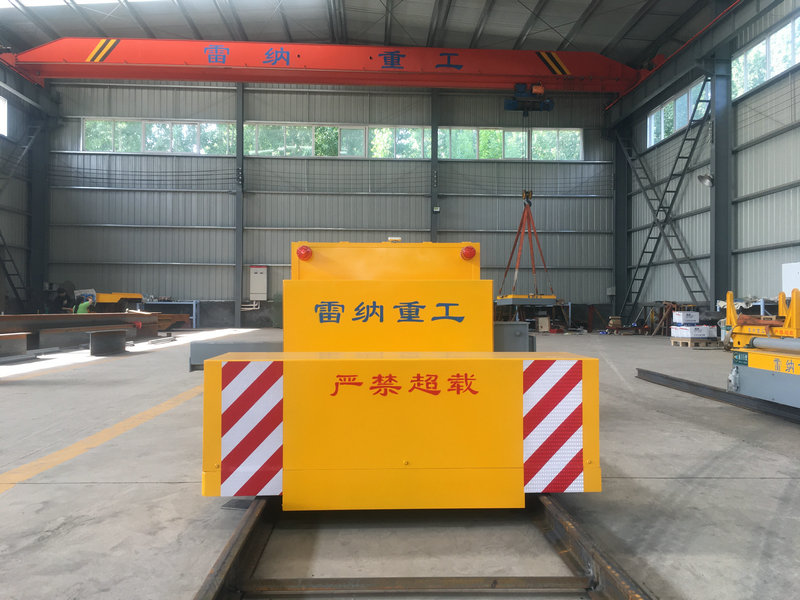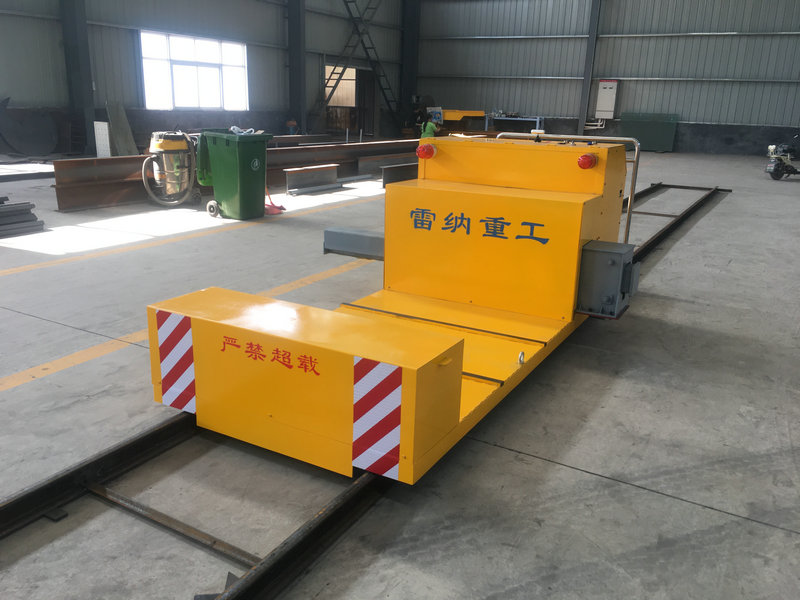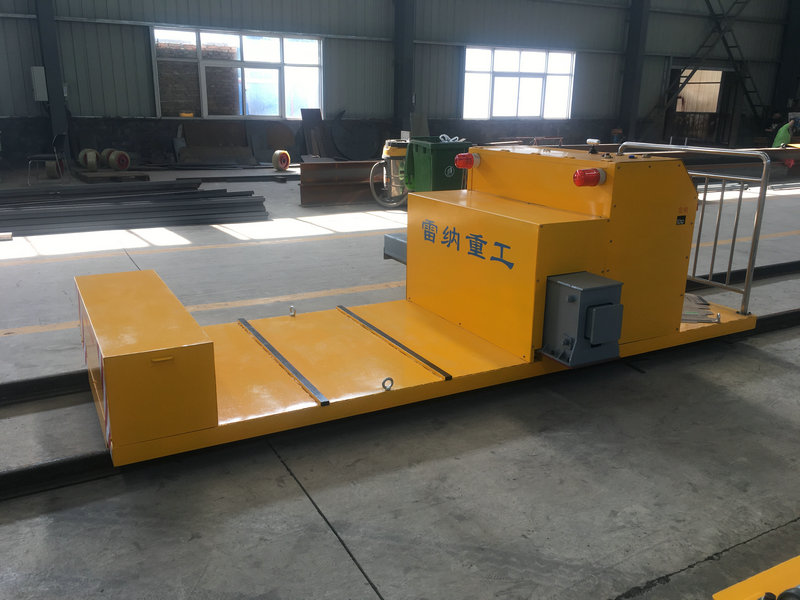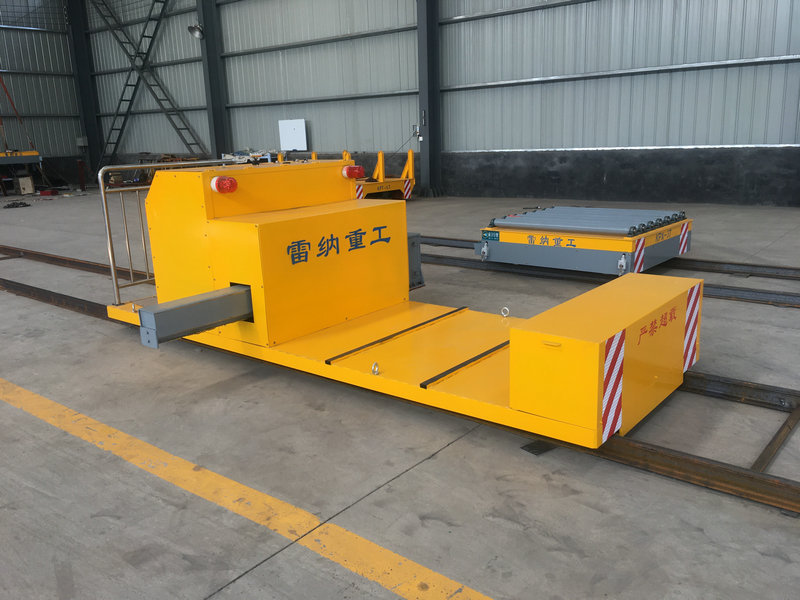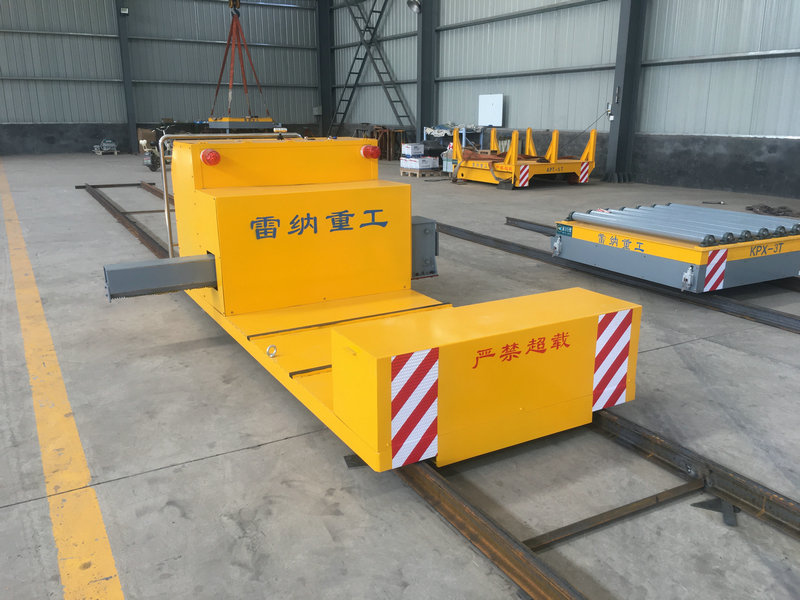The small-tonnage electric rail transfer vehicle is an electrically powered material handling device that runs on dedicated rails. It is suitable for short-distance, frequent, and small-tonnage cargo transport. Its compact structure, flexible operation, energy-saving and environmentally friendly design make it widely used in factory workshops, warehouse logistics, assembly lines, port terminals, and other environments, effectively improving transportation efficiency and reducing labor costs.
Product Structure and Components
1. Vehicle Structure
Frame: Utilizes a high-strength steel welded structure to ensure load stability. The surface is treated with anti-corrosion treatments (such as spray-coated and galvanized) to adapt to various environments.
Drive Wheelset: Equipped with motor-driven wheels for smooth operation. Select models are available with optional dual-wheel drive for enhanced traction.
Guide Wheels: Prevent derailment and enhance operational safety.
Buffers: Rubber/spring buffers are installed at the front and rear of the vehicle body to reduce collision impact.
2. Power and Control System
Drive Motor: Utilizes a DC/AC motor (0.5kW to 3kW) equipped with a reducer to provide smooth power output. Battery: Standard lead-acid/lithium battery (24V/48V), with a battery life of 4-8 hours. Fast charging and battery replacement are supported.
Control Method:
Handheld Remote Control (wireless/wired): Remotely controls start/stop, speed, and forward/reverse rotation.
Operation Console Control (optional): Suitable for larger tonnage or when manual operation is required.
3. Track System
Track Type: Available in light rail (P15-P24), I-beam, or custom-made tracks to accommodate various surface conditions.
Track Mounting: Available in ground-mounted, embedded, or suspended mounting styles to ensure smooth operation.
4. Safety and Auxiliary Devices
Limit Switch: Prevents the vehicle from exceeding its operating range.
Audio-Visual Alarm: Provides warning signals during operation for enhanced safety.
Emergency Brake: Equipped with manual/electromagnetic brakes for emergency stopping.
Anti-Slip Device: Anti-slip pads/anti-slip wheels can be added to prevent slipping under special operating conditions.
Product Features
Energy Efficiency: Electric motor drive reduces labor and energy costs compared to manual or diesel engines.
Flexible Operation: Wireless remote control enables precise speed and forward/reverse rotation to adapt to different operating conditions.
Safety and Reliability: Equipped with multiple safety features (limit, brake, and alarm) to ensure safe operation. Low noise and zero emissions: Suitable for cleanrooms, food processing plants, pharmaceutical industries, and other locations with stringent environmental requirements.
Easy maintenance: Modular design allows for easy replacement of key components, reducing maintenance costs.
Application Scenarios
Factory Workshops: Used for transferring semi-finished products between production lines, such as in machining and automotive assembly.
Warehouse Logistics: Used for handling pallets, boxes, etc. within warehouses to improve loading and unloading efficiency.
Ports and Terminals: Used in conjunction with lifting equipment for short-distance transport of containers or bulk cargo.
Assembly Line Logistics: Used as auxiliary transport equipment within automated production lines to achieve precise delivery.
Special Industries: For industries such as food, chemicals, and pharmaceuticals, stainless steel or explosion-proof designs are recommended.
Model Selection Recommendations
Determine load requirements: Select the appropriate tonnage (1T/2T/3T/5T) based on the cargo weight.
Consider operating distance: For longer transport distances, select a battery model with a longer range.
Track Compatibility: Confirm track specifications (gauge and material) in advance to ensure wheel compatibility. Environmental Adaptability: Humid, high-temperature, or corrosive environments require a specific protection rating (such as IP65/explosion-proof).
Control Method: Choose remote control or console control based on your operating preferences.
Maintenance and Care
Daily Inspection: Regularly check the battery charge, track cleanliness, and wheel wear.
Lubrication and Maintenance: Regularly lubricate moving parts such as bearings and gears.
Battery Management: Avoid excessive discharge and recharge regularly when not in use for extended periods.
Track Maintenance: Check the tracks for deformation and looseness to ensure smooth operation.




